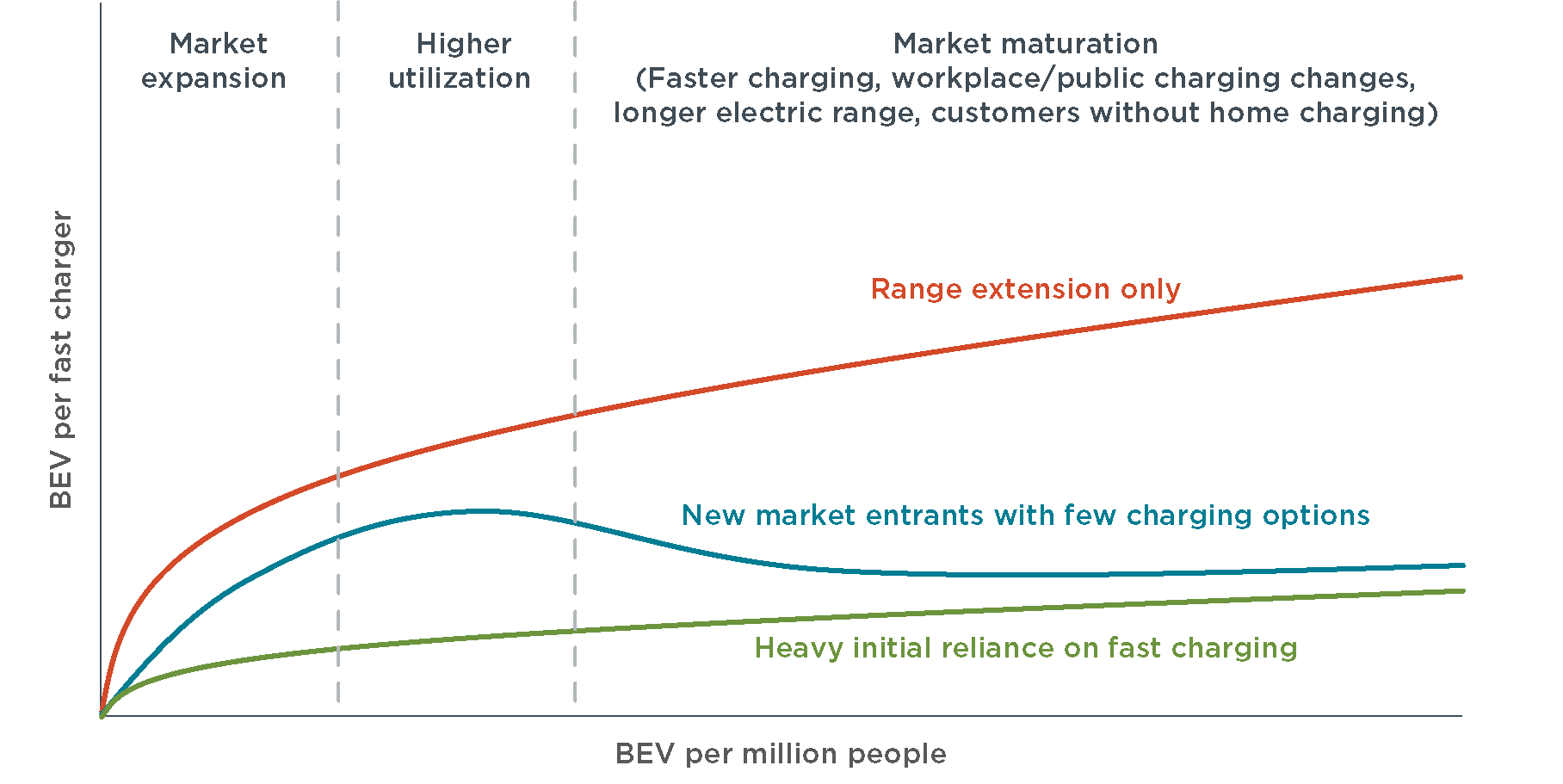Emerging best practices for electric vehicle charging infrastructure
White paper
Lessons learned on early electric vehicle fast-charging deployments
This white paper provides an overview of electric vehicle fast charging installed around the world and the lessons to be learned thus far. We review future-looking studies in the context of current deployments to interpret what the future might hold for the number of fast chargers needed going forward. Finally, we examine charging power, grid constraints, installation costs, and business models.
Among our findings are the following:
Fast charging needs will vary from region to region and the ratio of vehicles per charger will change over time. It is clear that fast charging is an extremely flexible resource that is currently being used in a variety of roles from accessing far away destinations to a replacement for level 2 charging at home, work and other public locations. Different regions will follow different trajectories, such as the idealized possibilities in the figure below, based on the differences in access to other charging types and on driving patterns. Along these trajectories, the number of BEVs that one fast charger supports changes over time within a region: initially there will be fewer vehicles per charger in order to achieve geographic coverage, with the ratio gradually approaching an equilibrium with more vehicles per charger as utilization increases.

Utility upgrade and installation costs are very low in some cases. Sufficient electrical capacity exists in many places if installers are flexible with location. Spare transformer and distribution capacity is likely to exist in cities and urban areas for lower-power fast chargers of 50 kW. Transformer upgrades become more likely with higher power 350 kW chargers or groups of chargers and those transformer upgrades generally cost $5,000 to $30,000 per fast charger. Lower cost per fast charger can be achieved by siting chargers at the same location at fast charging plazas. Large groups of very high-power fast chargers are more likely to trigger upgrades not just to transformers, but to the distribution lines from a substation to a site, increasing costs dramatically.
The business case for fast charging is promising, but uncertain. The business case for fast charging depends on many factors, but can be profitable at high utilization and a reasonable markup on electricity cost. However, the willingness for a customer to pay for fast charging is determined by the price of a gasoline alternative or the price of other charging. At low utilization, especially in an early market, the business case is challenging and financial support may be needed to encourage network expansion. Highway and rural sites are more likely to see lower utilization but may be important to encourage market growth and build range confidence. Urban sites are the most likely to have higher utilization as they can take on a variety of charging roles to support nearby customers. To improve the business case, high-performing sites can support low performing sites if they are part of a network. Additionally, automakers themselves are providing direct investment for fast chargers to confer greater value on their vehicles. Finally, fast charging seems to have a promising business case for electric vehicles in transportation network companies due to high mileage demands and high fast charger utilization.
